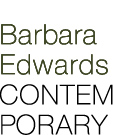'Mere Art' is an exhibition of digital video works by emerging artists Nicole Rayburn and Kathleen Boetto, curated by Peter Joch. Both artists' works are performative digital videos using their body. If we consider that 'Mere Art' defines art as a mere representation of the real thing, the title of the show reveals the exhibition's themes of appearance, copy, and imitation. If an imitation is a representation of 'reality', both artists mimic 'the truth' in their subject formation performances. Rayburn mimics scientific 'truth' by performing ecological phenomena. In Boetto's work, the mimicry of celebrities in tabloid images is an imitation of 'truth' as the celebrities are caught in their most private moments. These 'truths' are what makes media and scientific images more potent than art and turns art into 'Mere Art'. Hence, apart from 'Mere Art' being mere representation, the title refers to the inversed hierarchy between high and low. Thus, initially, the works in the exhibition bridge the gap between art, media, and ecology.
In Being Amy, Being Mischa, and Being Lindsay (all 2010), Boetto constructs digital tableau vivants based on paparazzi photographs of dejected celebrities. Subject formation has 'evolved' into mimicry of tabloid images in search for 'authentic' models to mimic. While, at first, Boetto seems to mock the celebrities, she is transferring their humiliation onto her own body. Here, digital video becomes surveillance, which Boetto transfers onto her deprecated self.
In Pollination Propositon (2009), Rayburn acts as a human-bee hybrid involved in a pollination experiment, while in Painting Suit (2009), she plays the role of a masked 'other' trying to blend in by painting itself. She mimics ecological phenomena performed by popular culture characters. As Rayburn, transformed into pop culture icons, performs these phenomena, her movements are motorized and repeated through digital manipulation. Digital video becomes ecology's accomplice mechanizing cross- species pollination and camouflage rituals.
Thus, Boetto's body can be seen as social, while Rayburn's ecological. However, in a culture where subjects are not constituted by lived but rather observed experience, the social in Boetto's work is not a community rather an audience. Similarly, the ecological in Rayburn's work is not biology rather fantasy, science fiction, and horror movies. Consequently, when taken together, these works point out the tremendous influence popular culture has on, not only our memes, but also our genes. As a result, the works blur the concepts of public and private, as well as the self and the other. ---Peter Joch
Nicole Rayburn received her MFA in 2009 from University of Western Ontario. She has exhibited at McIntosh Gallery, London, ON; Peter Robertson Gallery, Edmonton; and FAB Gallery, Edmonton.
Kathleen Boetto received her Masters of Visual Studies in 2010 from the University of Toronto. She has exhibited at Lennox Contemporary; The Goldfard Gallery, York University, and Gallery G+, Index G, all in Toronto.
Peter Joch is an MFA candidate at the University of Regina. He has curated exhibitions at Emily Carr University's Concourse Gallery, Vancouver; City Hall Rotunda, Toronto; and Barbara Edwards Contemporary, Toronto.
Generously supported by Steam Whistle Brewery

Nicole Rayburn
Pollination Proposition, 2009
video still
